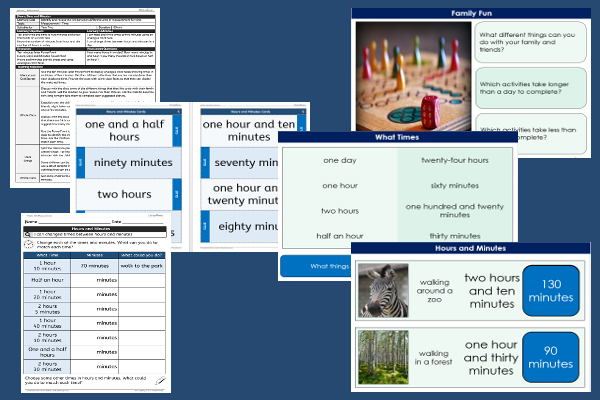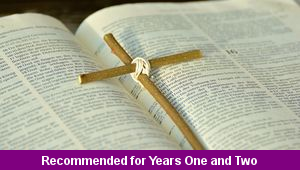Lesson Two – Hours, Days and Minutes

This maths teaching pack for Key Stage One gets the children to investigate how to identify and record the link between each of the different units that can be used to measure time on clock faces for hours, days and minutes.
The class can select and match the timing of some different family events and experiences between the matching sets of hours and minutes during one day.
Download this teaching pack including a lesson plan, classroom activities and an interactive presentation to investigate how to identify and record the link between each of the different units that can be used to measure time on clock faces for hours, days and minutes
Activities in this teaching pack include a worksheet for core and extension ability levels to covert times in hours and minutes into minutes and record matching events and experiences and a set of cards for support ability levels to match different times in hours and minutes into sets of minutes.
The interactive presentation gets the children to explore and record the link between each of the different units of measurement for time for hours, days and minutes.
This lesson is part of a maths scheme of work to get the children to identify, calculate and record the start and finish times and durations of different family events and experiences using analogue and digital clocks. There are teaching activities for shared learning, differentiated worksheets to support independent learning and interactive presentations to introduce concepts and key skills.
-

Vehicle Numbers
Investigate and record how to make and count models of objects to ten, twenty and thirty to match objects related to different types of vehicles
-

Bible Stories
Research and illustrate how the teachings of Jesus are presented in different stories from the Bible
-

Word Matching
Identify, match and record the initial sounds that have been used in a range of cvc words beginning with different letters
-

Family Toys
Investigate and record how a selection of different toys and games that were owned by families have changed and developed over time
